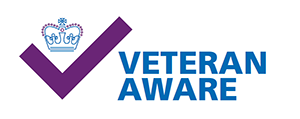Our Services A - Z - Radiology Department
About the service
We provide radiology services at the following locations:
- Whiston Hospital
- St Helens Hospital
- Newton Community Hospital**
- Millennium Centre, St Helens
- Lowe House (Obstetric Ultrasound)
- Widnes Urgent Treatment Walk-in Centre
** Please Note: The X-Ray Department at Newton Community Hospital will be closed for approximately 8 weeks from Tuesday 1st April for equipment upgrades.
We apologise for the inconvenience this downtime may cause.
If your GP has referred you for an X-ray, please see alternative locations, opening times and contact details below.
Please note ultrasound appointments are not affected by the closure.
Radiology helps to diagnose and treat disease using imaging technology.
There are a variety of imaging techniques that are used in our Trust they include:
- Interventional Radiology – Whiston only
- CT (Computed Tomography)
- DEXA Bone Density Scans – St Helens only
- Fluoroscopy
- Mammography – Burney Breast Unit – St Helens only
- MRI (Magnetic Resonance Imaging)
- Nuclear Medicine – Whiston only
- X-Rays
- Obstetric Ultrasound
- General Ultrasound
- Location & Opening Hours
Whiston Hospital – Outpatients X-Ray Department – Level One – Yellow Zone
- Monday to Friday - 9.00am to 4.30pm
St Helens Hospital – Radiology Department – Ground Floor – Orange Zone
- Monday and Tuesday - 09.00am to 7.30pm
- Wednesday to Friday - 09.00am to 4.30pm
Millennium Centre, St Helens
- Monday to Friday - 09.00am to 6.30pm -
- Saturday and Sunday - 09.00am to 4.30pm
Newton Community Hospital
Please Note: The X-Ray Department at Newton Community Hospital will be closed for approximately 8 weeks from Tuesday 1st April for equipment upgrades.
We apologise for the inconvenience this downtime may cause.
If your GP has referred you for an X-ray, please see the alternative locations listed below.
Please note ultrasound appointments are not affected by the closure.
- St Helens Hospital, WA9 3DA - 9:00am - 7:30pm Monday to Friday (Closed on Saturday and Sunday)
- Millennium Centre, WA10 1HJ - 9:00am - 6:30pm Monday to Friday, 9:00am - 4:30pm Saturday and Sunday
Widnes Walk-in Centre
- Monday to Sunday - 08.00am to 7.30pm
- Current Waiting Times
Current approximate waiting times for Radiology modalities below:
CT (Computed Tomograph): 4 to 5 weeks
CT (Computed Tomography) – Cardiac scans: 11 to 12 weeks
CT (Computed Tomography) – Colon scans: 3 to 4 weeks
Fluoroscopy: 5 to 6 weeks
MRI (Magnetic Resonance Imaging): 5 to 6 weeks
Nuclear Medicine: 5 to 6 weeks
X-Rays: Open Access for GP referrals
DEXA Scans: 5 to 6 weeks
General Ultrasound: 6 to 7 weeks
Ultrasound MSK/Vas/Neck: 6 to 7 weeks
updated 10 February 2025
- Patient Information Leaflets
Title - Having a CT Colonography
Description - This leaflet aims to inform you on having a Computed Tomography scan to look at your large bowel (CT Colonography). It explains how the test is done, what to expect, and what the possible risks are. If you have any questions or concerns, please do not hesitate to speak to your doctor or CT staff.Title - Having a Hickman Line
Description - This leaflet has been given to you to help you understand your Hickman line and has been prepared by the staff in the X-Ray department at Whiston Hospital. If you have any questions or concerns, or would like to know about alternative treatment after you have read this, please speak to the specialist team who referred you for your Hickman line.Title - Having a Percutaneous Biliary Drainage
Description - This leaflet tells you about the procedure known as Percutaneous Biliary Drainage. It explains what is involved and what the possible risks are. It is not meant to be a substitute for informed discussion between you and your doctor, but can act as a starting point for such a discussion.Title - Having a Percutaneous Liver Biopsy
Description - This leaflet tells you about having a Percutaneous Liver Biopsy. It explains what is involved and what the possible risks are. It is not meant to replace informed discussion between you and your doctor but can act as a starting point for such discussions. If you have any questions about the procedure, please ask the doctor who has referred you or the department which is going to perform it.Title - Having a Radiological Inserted Gastrostomy (RIG)
Description - This leaflet tells you about having a radiological inserted gastrostomy (RIG). It explains what is involved and what the possible risks are. It is not meant to replace informed discussion between you and your doctor but can act as a starting point for such discussions.Title - Having a Trans-Jugular Liver Biopsy
Description - This leaflet tells you about having a trans-jugular liver biopsy. It explains what is involved and what the possible risks are. It is not meant to replace informed discussion between you and your doctor, but can act as a starting point for such discussions. If you have any questions about the procedure, please ask the doctor who has referred you or the department which is going to perform it.Title - Having an Angiogram
Description - This leaflet tells you about having an angiogram. It explains what is involved and what the possible risks are. It is not meant to replace informed discussion between you and your doctor, but can act as a starting point for such discussions. If you have any questions about the procedure, please ask the doctor who has referred you or the department which is going to perform it.Title - Having an IVC Filter
Description - This leaflet tells you about having an inferior vena cava (IVC) filter inserted. It explains what is involved and what the possible risks are. It is not meant to replace informed discussion between you and your doctor but can act as a starting point for such discussions.Title - Your Chest x-ray
Description - This leaflet explains to you about having a chest x-ray. - Contact Details
General Queries - 0151 430 1309
Plain Film Radiography (X-Rays) - 0151 430 1194
CT, MRI, Fluoroscopy and Ultrasound - 0151 676 5756
Nuclear Medicine - 0151 430 1550
Maternity Ultrasound - 0151 430 1378
Appointment Queries
Report Queries
- About the Team
Clinical Director
- Meenal Abhyankar
Radiology Manager
- Sue Conroy
There are a lot of people who are here to help you on your journey through Radiology and all play an important role in ensuring you receive the best possible care and experience when you attend the department. You may meet the following member of the team:
- Radiologist – Doctors who specialise in Radiology, they analyse the images to diagnose, monitor and treat disease
- Diagnostic Radiographers – produce and process images using cutting-edge technology in all modalities
- Sonographers – specialise in using ultrasonic imaging devices producing images/scans
- Nurses – Specialist Radiology nurses who may look after you during your visit
- Assistant Practitioners – undertake a selection of x-ray images
- RDAs (Radiology Department Assistants) – Assist the clinical team with day to day duties
- Support Workers – will assist you during your visit and help the clinical team
- Administration Team – receptionists, appointment clerks, PAs/administrators
- Health & Safety
The use of X-rays allows physicians to look inside the body to diagnose an injury or illness. When done for appropriate situations, X-rays are safe and beneficial.
It is important that X-rays are not misused or overused because over a lifetime, a person may be exposed to a fairly large amount of cumulative radiation. It is therefore important that the benefit of each X-ray test be considered before it is done. There is strict legislation governing the use of X-rays with all hospitals. The legislation is called The Ionising Radiation (Medical Exposure) Regulations 2000 known as IRMER 2017. Procedures are in place in all departments to ensure that patients, staff and visitors are safe and that no one receives an unnecessary dose of radiation.
Radiation can also be harmful to the unborn child. Patients undergoing some x-ray procedures may be asked if there is any possibility of pregnancy. If there is then, the procedure may be deferred or an alternative method of imaging considered.
In certain circumstances it is necessary to perform the examination in pregnant patients. In this situation the radiation dose is kept to a minimum consistent with the diagnostic requirements.
Nuclear Medicine
In Nuclear Medicine a radiopharmaceutical or tracer is given, usually by injection into a vein to show how specific parts of the body are working. The images are then taken by a large camera (a gamma camera), which allows us to see how the tracer has been taken up by the body. Unlike many other radiology appointments you may need to attend the radiology department more than once during the day to complete your examination. You appointment letter will give you more information.
MRI
Not all patients are able to be scanned on an MRI scanner. Some devices such as aneurysm clips or cochlear implants are not able to be scanned as the MRI scanner would affect how they work. Patients who have devices such as pacemakers, stents, clips or hearing devices may still be able to have an MRI scan however these devices need to be checked prior to an appointment being made to ensure we are able to meet the safety requirements of the device. This is something that is usually picked up at the scan vetting stage so patients can be scanned in the correct way. There are some restrictions to MRI scanning such as device safety requirements and bore size (70cm diameter) which can restrict some patients from having an MRI scan.
- Radiology Procedures
General Radiography
The most common form of radiology examination is the X-ray. A small burst of radiation is directed at a specific area of the body. The beam of radiation is absorbed by varying degrees, depending on the type of tissue it is travelling through. It then hits on a special digital image recording plate which is processed to reveal an image.
Computerised Tomography (CT)
CT uses radiation to generate images. The scanner consists of an x-ray tube and a series of detectors that rotate about the patient. The patient lies on a table which moves through the middle of the scanner acquiring images.
Magnetic Resonance Imaging (MRI)
MR imaging uses a powerful magnetic field, radio frequency pulses and a computer to produce detailed pictures of organs, soft tissues, bone and virtually all other internal body structures
Ultrasound
Ultrasound works by a probe or transducer being placed on the skin over the area to be examined. This emits pulses of sound waves. As they pass through the body some of the sound waves are partially deflected back to the transducer, these returning sound waves are processed and transformed into a digital image
Angiography and Fluoroscopy
The equipment used for these imaging techniques uses radiation and a digital detector that produces real time images. For angiography contrast is injected into the blood vessel to be investigated. A series of images are taken during the injection to look for narrowing or blockages.
Nuclear Medicine
In nuclear medicine imaging, radiopharmaceuticals are taken internally, for example intravenously or orally. Then, external detectors (gamma cameras) capture and form images from the radiation emitted by the radiopharmaceuticals. This process is unlike a diagnostic X-ray where external radiation is passed through the body to form an image.
Dexa / Bone Densitometry Scanning
Dexa scans are used to measure the amount calcium of bones to determine how strong they are. A short burst of radiation is passed through the body. Some is absorbed by the tissues and some passes through to a detector. The detector uses this information to calculate the bone density.
- Relevant Links
Page last updated on 26th March 2025






